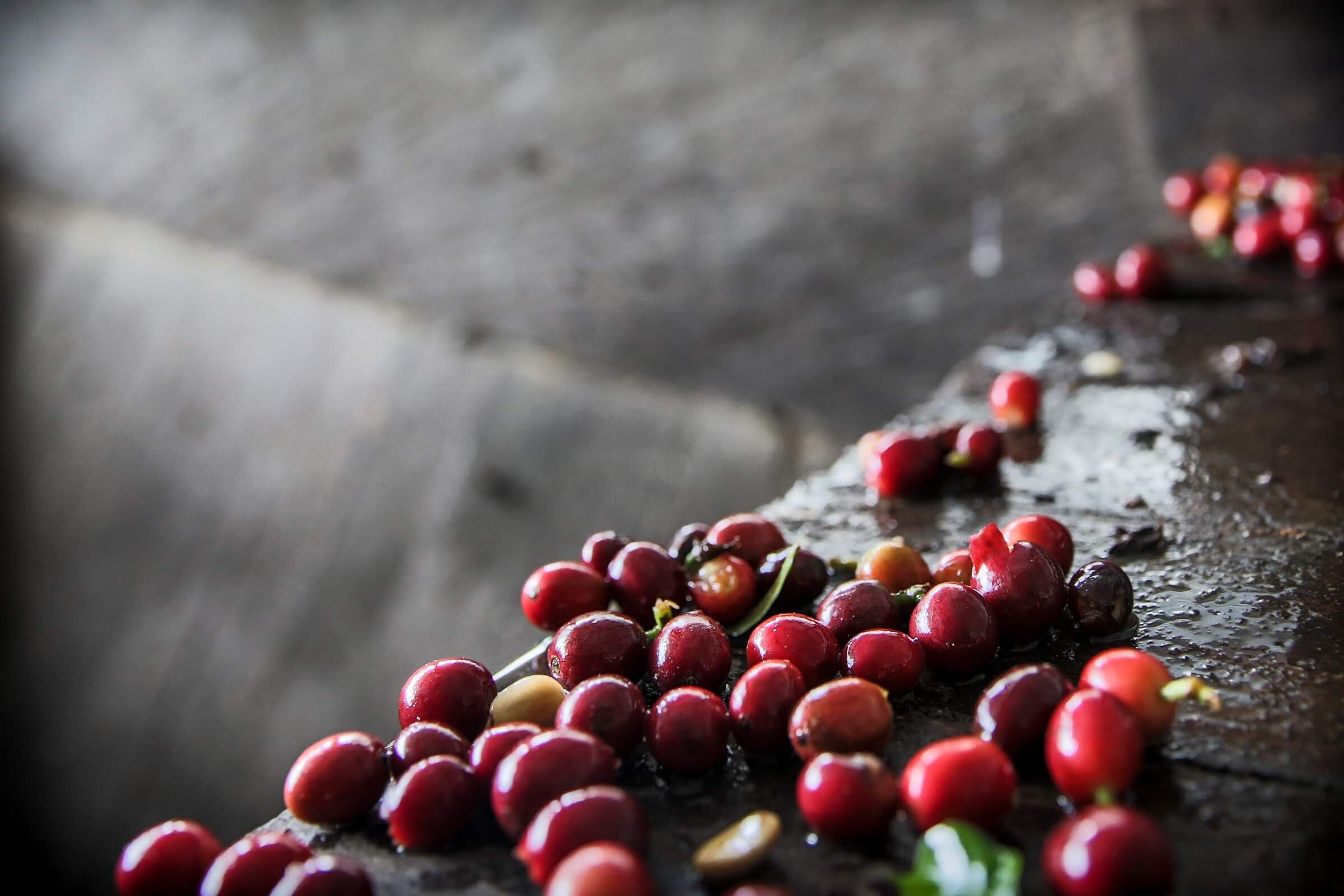Coffee processing with fermentation in Colombia
As the sun goes down during the harvest season, all across Colombia the day’s coffee cherries are being pulped through small individual mills at each small family-owned farm. Naturals (aka dry-processed) and honeys (aka pulped-naturals) are very rare and quite difficult to produce well here, and though some of the washed coffees are processed using mucilage strippers, most of the 500,000 plus coffee farms employ the traditional fermented method.
Here’s an overview of how it’s often done in Colombia with quality in mind:
As soon as picking begins, fermentation is an issue requiring control. Throughout the day heavy fermentation can occur in the fruit gathered in sacks sitting in the sun. A little less than half of the volume in a sack of cherries is air, providing oxygen for rapid proliferation of microorganisms. Left too long this stage can lead to defects such as “sours” or the dreaded “stinker” bean, which can instil a pungent smell and foul flavour across few kilograms of finished coffee beans. Storing in water is a great solution if possible, pausing the fermentation cycle until ready to pulp.
Try as you might, some green and overripe coffee cherries inevitably will have become mixed throughout the ripe cherries during picking. These are often separated first visually, then further by size through screens; the smaller cherries also generally being underdeveloped. The next step is to separate the "floaters" from the "sinkers”. Overripe coffee cherries, undeveloped coffee cherries, sticks, and other debris float in water. Ripe coffee beans and green coffee cherries are dense and sink in water.
Removing the seeds from the cherry is carried out using small pulping machines, usually driven by electric motors. On some pulpers, if calibrated well, the internal pressure pushes the coffee against a gap only large enough for a coffee bean to pass through while any hard green cherries and skins are separated. The soft, ripe cherries break against the screen releasing the coffee beans through the gap. If not calibrated well the beans will be damaged, greens could pass through pulped, or ripe cherries could be discarded with the skins for compost.
Fresh skins and pulp contain about 2.5% nitrogen, 1% phosphorous pentoxide, 2.5% potassium, and 0.5% calcium; a perfect starting compost mix for coffee production when combined with lime, sawdust, and left for a year. After pulping 100kg of ripe Arabica cherries, there will be about 12kg of mucilage adhering to the beans. Once dry, this is about 2kg, with 1kg of that being sugars that will be broken down and consumed during the fermentation to loosen the mucilage from the beans for easy washing.
After pulping 100kg of ripe Arabica cherries, there will be about 12kg of mucilage adhering to the beans. Once dry, this is about 2kg, with 1kg of that being sugars that will be broken down and consumed during the fermentation to loosen the mucilage from the beans for easy washing. Most fermentation cycles in Colombia are without water, first a yeast fermentation producing alcohol, then bacterial resulting in mainly inactive lactic acid. Almost always, no additives are used; rather the tiny life forms found everywhere.
Mucilage has a pH of about 6.5, and this drops to about 4.1 throughout fermentation, favouring different species as it does. Though a wide range of microbial flora started out in the raw material, ahem, as the environment becomes more acidic many species have a hard time and quickly face extinction. By the end of the fermentation cycle, the population distribution of the microorganisms has completely shifted, and the now dominant life form is a species that was present in only small populations in the original sticky fruity starting phase.
Generally, if the pulper and fermentation tanks aren't too much higher than 1000 MASL the temperature will be such that the fermentation will be complete by morning. As you go higher and higher into the hills more time will be required as it is cooler, slowing down the microbiological activity, just like a fridge. 24 to 36 hours is a common requirement at around 2000 MASL, or even 48+ hours with a second day's new coffee added at the 24-hour mark to provide new sugars for the saturated communities of lactic acid bacteria, some Enterobacteriaceae, and Bacillus.
The fermentation should be concluded as soon as possible after sufficient mucilage degradation has been accomplished, unless (uncommon/risky) the goal is to add ferment characteristics. As a rough guide, this timing is ascertained by reaching into the mass and rubbing the parchment between your fingers to note whether the grittiness of the parchment surface can yet be felt as you grind the beans against each other. Prior to readiness, this action will be well slimy, not gritty.
The period of fermentation, in practice, can only be concluded when it is possible to take the coffee to the next steps: washing, and then either soaking or drying. Depending on the goal this timing is important, with most farmers aiming to begin the drying process with a full day ahead of them, thus they work backwards to find the best pulping and fermentation time.
The role of microorganisms in taste defects of wet-processed coffee is a matter of debate. What is sure, is that the over-fermentation defect is controllable and avoidable, while unclean cups have a higher likelihood of mould. Poor drying is more likely if you under-ferment. Over at El Fénix from this year, we will be controlling the pH of the mucilage, pitching single yeast strains, and finding out how interesting we can make our washed coffees beyond and alongside their natural expression.






